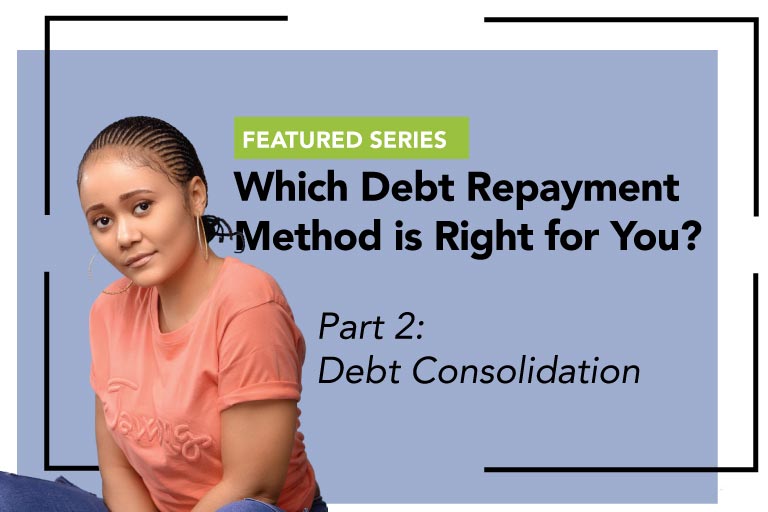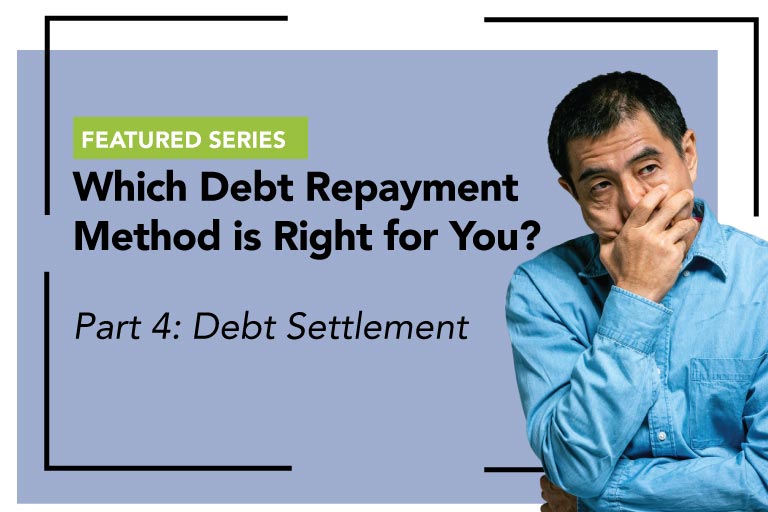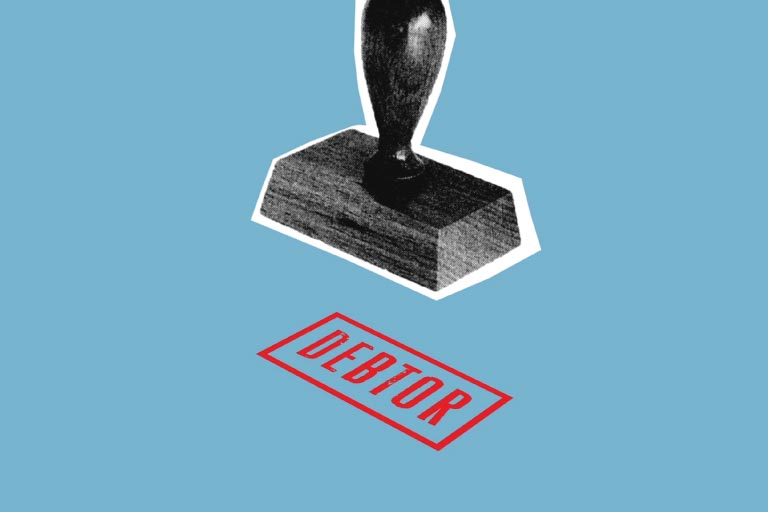Which Debt Repayment Method is Right for You? A Closer Look at Debt Consolidation

When you have significant credit card debt, you want to develop a plan to pay it off as quickly as possible. The debt can keep you from achieving your financial goals, and if you aren’t careful the growing interest can spiral out of control. For some, Debt Consolidation is the answer.
HOW TO USE THIS GUIDE
The guide has four sections, one for each repayment method: Debt Management Program, Debt Consolidation, Bankruptcy, and Debt Settlement.
Each section will provide in-depth detail about how a particular repayment method works. It will explain how much the service costs, how it may affect your credit, how long it takes, and so on. At the bottom of each section is a Summary section, which highlights this information quickly. Read on, or use these quick links to jump to other sections.
- Part 1 – Debt Management Program
- Part 2 – Debt Consolidation (current page)
- Part 3 – Bankruptcy
- Part 4 – Debt Settlement
As this is part 2, we’re taking a closer look at Debt Consolidation.
What is it? Debt consolidation involves combining multiple debts into one debt, or using a new debt to “pay” old debts.
Of course, you aren’t really “paying” the old debts right away with consolidation. Instead, you are just moving them to a new, often larger, debt. The goal is usually to lower your overall interest rate, pay less each month, and make a single monthly payment.
One potential problem with consolidation is that you need good credit to get good terms on your new loan or line of credit.
How do you get started?
There is not a one-size-fits-all way to get started. Numerous “consolidation” products exists. The best way to start would be to explore various options and get quotes for interest rates and other costs.
A few examples of consolidation products include balance transfers on credit cards and using a personal loan to pay off a debt, such as a car loan.
There are companies who specialize in “debt consolidation loans,” but they may not be your best option. Sometimes these are personal loans with sky-high interest rates. Also, watch out for variable interest rates that increase significantly over time. These include promotional offers on balance transfer credit cards that start at zero percent interest and then skyrocket later.
How much does it cost?
You may pay closing costs or balance transfer fees of around three to five percent of the balance.
How does it work? You open a new line of credit and use it to “pay off” older balances that you owe. The older balances are essentially bundled or “consolidated” into this new debt. Then, you pay off the new debt.
How long does it take? This will vary depending on the type of consolidation you pursue.
Understand the difference between secured and unsecured debt. Remember that when you take a secured loan you are putting collateral at risk. An example is a Home Equity Line of Credit (HELOC), which uses your home as collateral.
How will this impact your credit? This can vary. If you close the accounts you are consolidating, you may experience a drop in your credit score because your average age of accounts will decrease and your credit utilization will increase (both FICO factors). If you move debt to a new line of credit but keep your old accounts open and paid, you are more likely to see a positive or neutral credit impact.
Debt consolidation is a mixed bag.
If you have a good credit score, this may be a viable strategy to pay off your debts. It may allow you to make one monthly payment and repay your debt at a lower interest rate. Interest rates can change over time. Especially in the case of balance transfer, there is often a promotional period before the interest rate increases exponentially. Then any interest accrued will come due if you can’t pay the debt in full before the promotional period ends.
This can be risky.
This can be a dangerous path forward. Without good credit you’ll get a higher interest rate. This can make your debt repayment more difficult and more expensive.
Consolidation does not address financial behavior or help you to change your spending habits.
There is no counseling component, and you end up replacing old debt with new debt.
Want to continue reading this 4-part series. Click here to jump to part 3.




